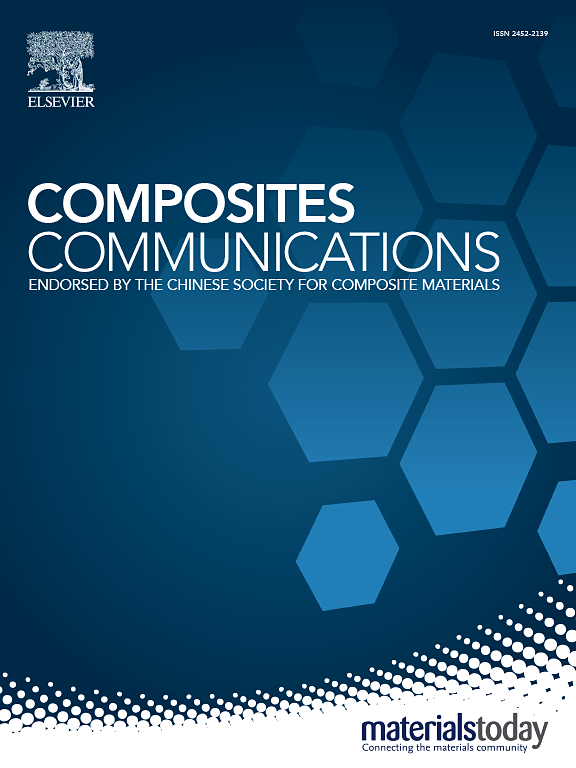Morphology matters in the antibacterial performance of copper Nanoparticles@fullerenol composites
IF 7.7
2区 材料科学
Q1 MATERIALS SCIENCE, COMPOSITES
引用次数: 0
Abstract
Fullerene (C60) has been considered as feasible antibacterial agent due to the photodynamic therapy (PDT) effect. Nevertheless, the upgradation of its antibacterial power remains an issue to be solved. Since morphological structure affects the antimicrobial performances of nanomaterials, a thorough investigation of morphology-antibacterial property of C60 composites becomes important. Herein, copper nanoparticles (CuNPs) decorated fullerenol (hydroxylated C60) composites (CuNPs@fullerenol) with four morphologies (irregular, flake-like, spherical and acicular) were facily synthesized via liquid-liquid interface precipitation (LLIP) along with photochemical reduction, whose antibacterial effects were obviously different with each other and strongly related to their morphologies. It has been proved that sample sharpness was a decisive factor in its antimicrobial performance under dark condition. In contrast, production efficiency of PDT-induced reactive oxygen species (ROS, e.g. 1O2 and •O2−) became critical when composites were illuminated by visible light. The specific surface area and bandgap of CuNPs@fullerenol were further confirmed as key points affecting the yield of 1O2 and •O2−. The findings provide possibility of enhancing the antibacterial properties of C60-involved nanomaterials simply by morphology modulation.
形貌对铜Nanoparticles@fullerenol复合材料的抗菌性能有重要影响
富勒烯(C60)因其光动力治疗(PDT)作用而被认为是一种可行的抗菌剂。然而,其抗菌能力的提升仍然是一个有待解决的问题。由于形态结构影响着纳米材料的抗菌性能,因此深入研究C60复合材料的形态-抗菌性能变得非常重要。本文采用液-液界面沉淀(LLIP)和光化学还原法制备了四种形态(不规则、片状、球形和针状)的铜纳米粒子修饰富勒烯醇(羟基化C60)复合材料(CuNPs@fullerenol),其抑菌效果各不相同,且与其形态密切相关。在黑暗条件下,样品的锐度是影响其抗菌性能的决定性因素。相反,当复合材料被可见光照射时,pdt诱导的活性氧(ROS,如1O2和•O2−)的生产效率变得至关重要。进一步证实CuNPs@fullerenol的比表面积和带隙是影响1O2和•O2−产率的关键因素。这一发现为单纯通过形态调控提高c60纳米材料的抗菌性能提供了可能。
本文章由计算机程序翻译,如有差异,请以英文原文为准。
求助全文
约1分钟内获得全文
求助全文
来源期刊

Composites Communications
Materials Science-Ceramics and Composites
CiteScore
12.10
自引率
10.00%
发文量
340
审稿时长
36 days
期刊介绍:
Composites Communications (Compos. Commun.) is a peer-reviewed journal publishing short communications and letters on the latest advances in composites science and technology. With a rapid review and publication process, its goal is to disseminate new knowledge promptly within the composites community. The journal welcomes manuscripts presenting creative concepts and new findings in design, state-of-the-art approaches in processing, synthesis, characterization, and mechanics modeling. In addition to traditional fiber-/particulate-reinforced engineering composites, it encourages submissions on composites with exceptional physical, mechanical, and fracture properties, as well as those with unique functions and significant application potential. This includes biomimetic and bio-inspired composites for biomedical applications, functional nano-composites for thermal management and energy applications, and composites designed for extreme service environments.
 求助内容:
求助内容: 应助结果提醒方式:
应助结果提醒方式:


